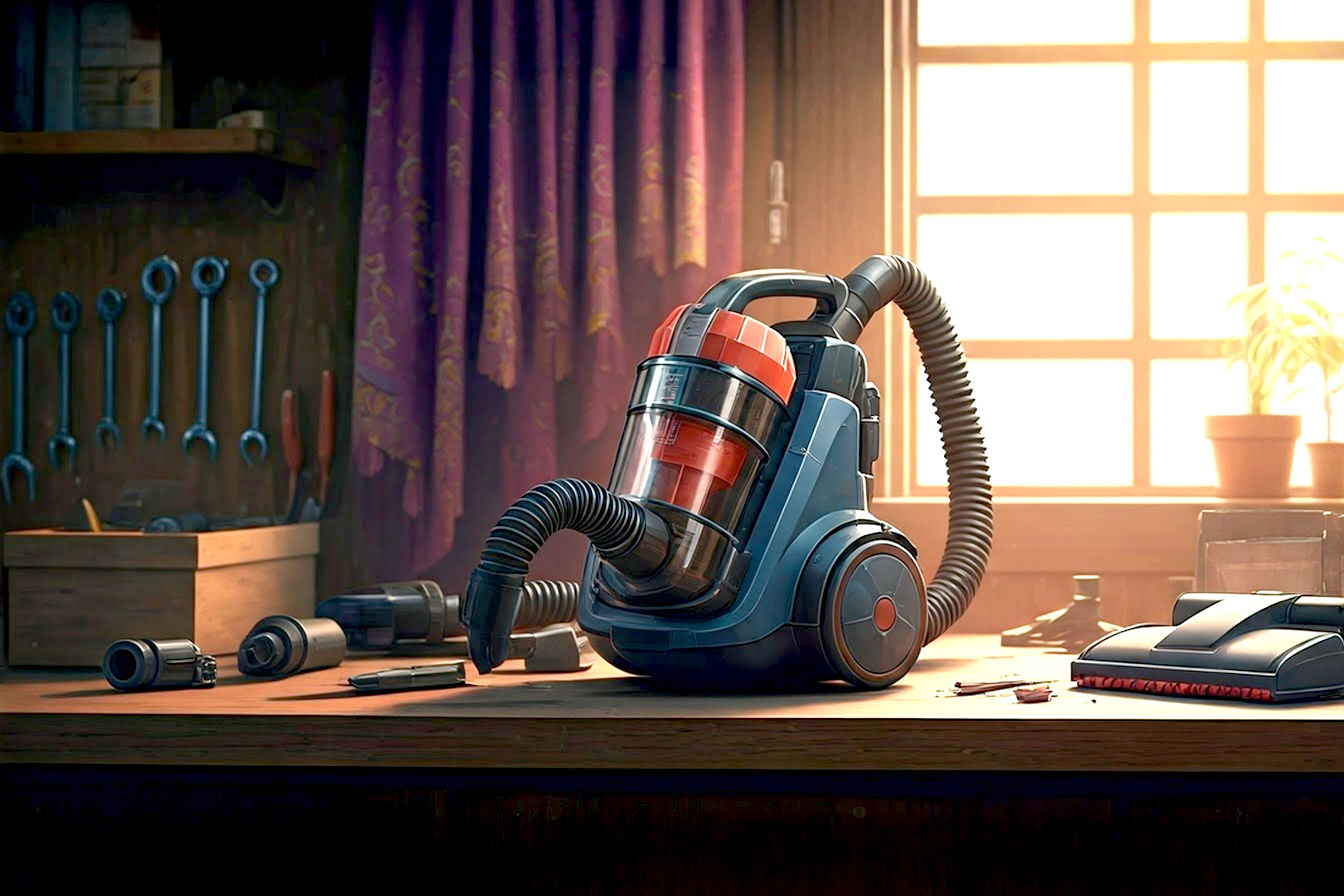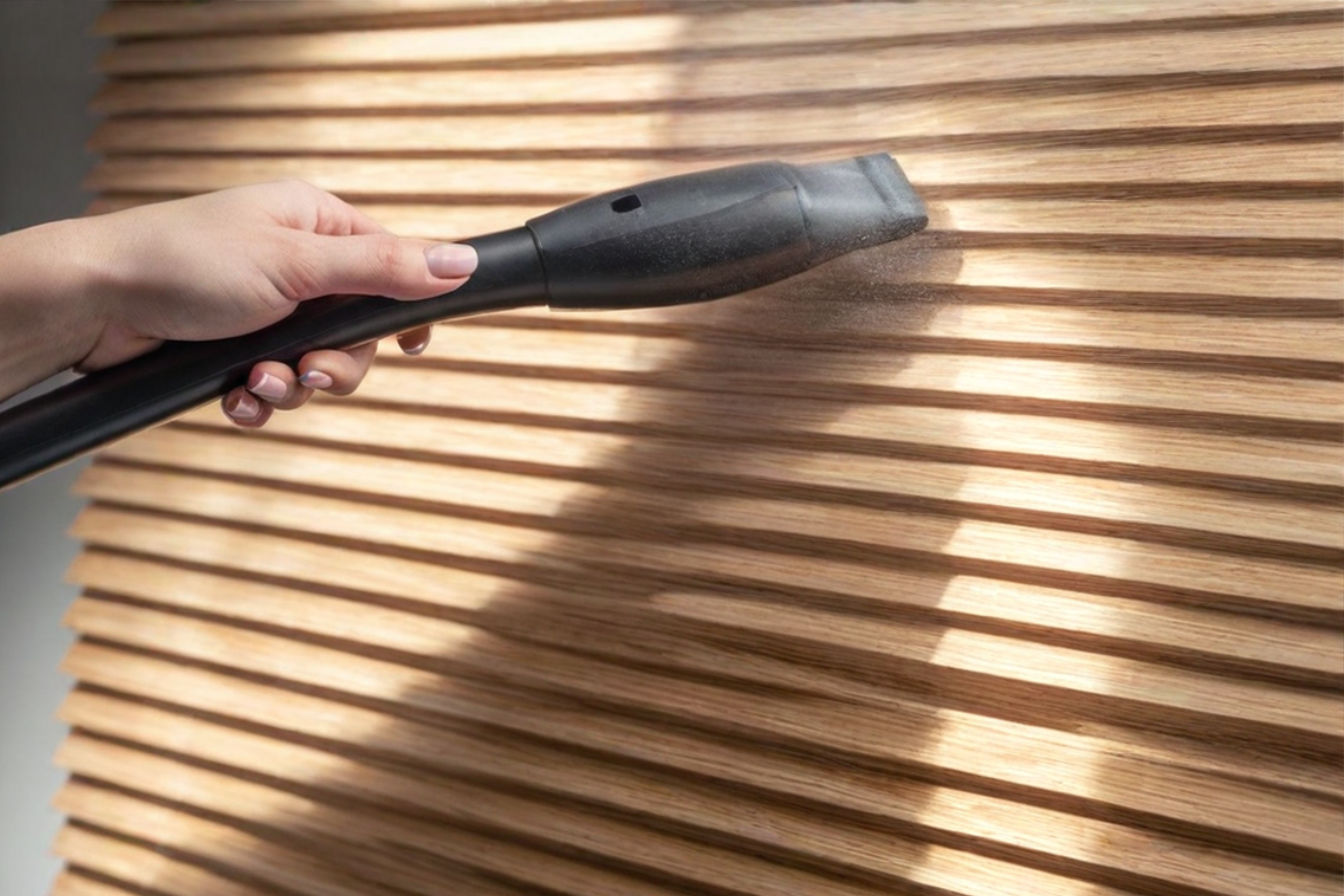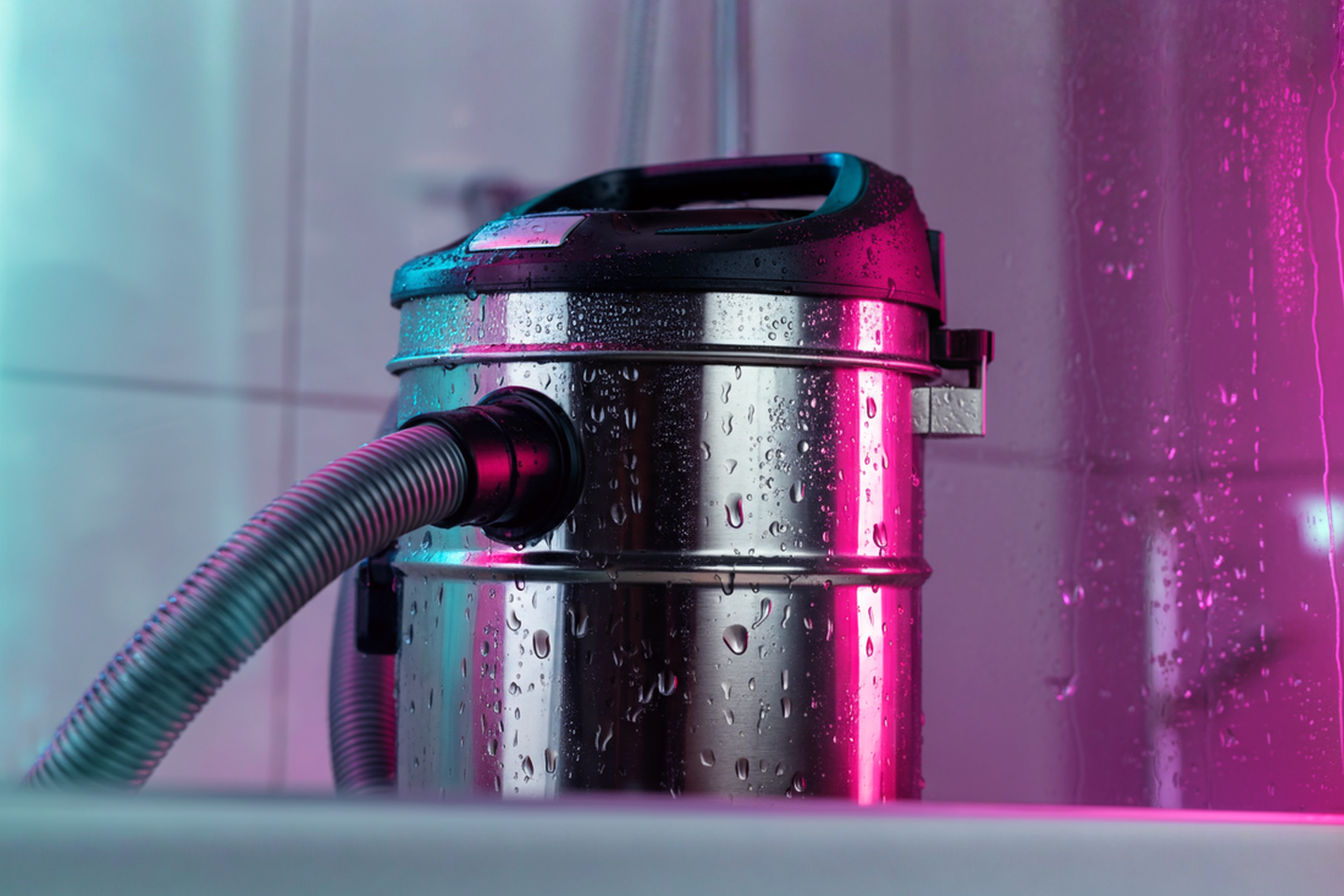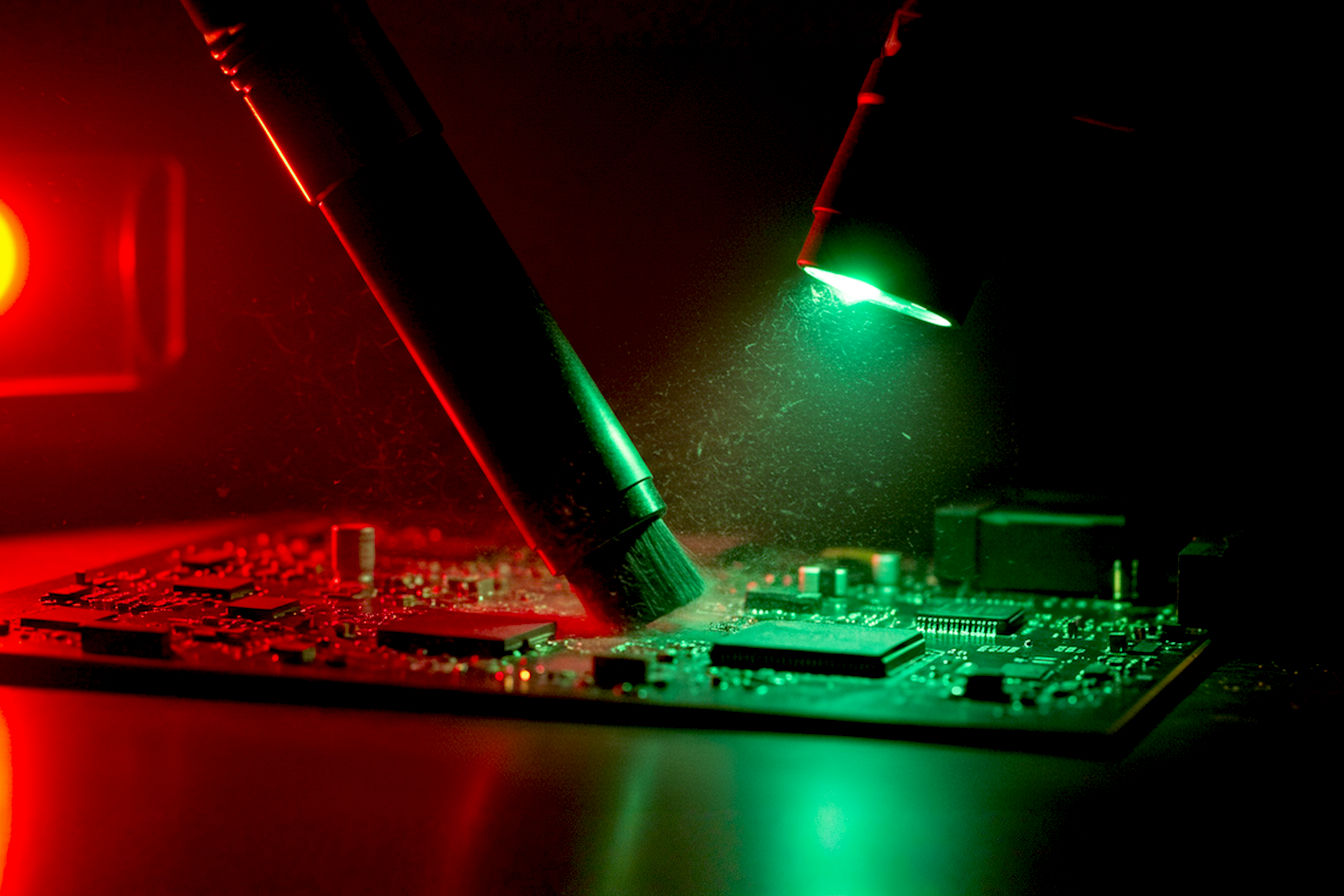Vacuum Donation Preparation: Refurbishing Steps Before Giving Away
Transform your unused vacuum into a valuable donation by following this comprehensive refurbishment guide. Learn which parts to clean, what to replace, and how to ensure your donation makes a real difference.
This post may contain affiliate links. If you make a purchase through these links, we may earn a commission at no additional cost to you.
That old vacuum cleaner gathering dust in your closet could be someone else’s treasure. Instead of adding to the growing problem of electronic waste, refurbishing and donating your used vacuum cleaner gives it a second life while helping someone in need. Each year, thousands of salvageable vacuum cleaners end up in landfills when they could be serving families who can’t afford new cleaning equipment.
Proper vacuum refurbishment makes a significant difference in the quality and usefulness of your donation. A thoroughly cleaned, repaired, and tested vacuum cleaner provides immediate value to its new owner rather than becoming another broken item that quickly returns to the waste stream.
This comprehensive guide will walk you through every step of preparing your vacuum for donation—from initial assessment to final packaging. Whether you’re dealing with an upright, canister, stick, or robotic vacuum, these refurbishing steps ensure your donation will be both appreciated and useful.
By dedicating a few hours to this process, you’re not just helping someone in need—you’re also participating in sustainable consumption practices that benefit our environment. Organizations serving low-income families, disaster relief efforts, and community support programs are always in need of functional household appliances like vacuum cleaners.
Let’s get started with transforming that unused vacuum into a valuable donation that will make a genuine difference in someone’s life.
Assessing Your Vacuum’s Condition
Before diving into the refurbishment process, you need to determine if your vacuum cleaner is a good candidate for donation. Not every used vacuum deserves a second life—some may be beyond reasonable repair or could potentially pose safety hazards.
Initial Inspection Checklist
Start by examining these critical components of your vacuum:
- Power system: Check that the cord is intact without fraying or damage. For cordless models, ensure the battery holds a charge.
- Motor function: The vacuum should run without excessive noise, burning smells, or overheating.
- Suction capability: Test that it still picks up debris effectively.
- Housing integrity: Look for cracks or breaks in the main body that might affect function.
- Moving parts: Wheels should turn freely, and rotating brushes should spin properly.
Take a systematic approach by testing each function separately. Record any issues you discover—they’ll form the basis of your refurbishment plan.
Identifying Common Vacuum Issues
Most vacuum problems fall into predictable categories that can help guide your refurbishment efforts:
- Suction loss: Often caused by clogged filters, blocked airways, or broken seals
- Strange noises: May indicate belt problems, bearing failures, or objects caught in rotating parts
- Burning smell: Potentially a serious motor issue or overheated belt
- Intermittent operation: Usually electrical problems with the switch or power cord
- Excessive dust release: Sign of torn filters or improper sealing
Understanding these patterns helps determine whether repair is feasible. For example, a vacuum with a simple clogged hose is easily fixed, while one with a burned-out motor might not be worth repairing for donation purposes.
Determining Refurbishment vs. Recycling
Not every vacuum cleaner can or should be refurbished. Use this decision framework to determine whether to proceed:
Consider refurbishment if:
- The vacuum is less than 10 years old
- Replacement parts are readily available
- The motor runs without concerning symptoms
- Major components are intact
- Repairs would cost less than 30% of a new model
Consider recycling instead if:
- The motor is burned out or seriously damaged
- Multiple major components have failed
- The model has known safety recalls
- Replacement parts are unavailable or excessively expensive
- The vacuum has significant electrical issues
Many municipalities have specific electronics recycling programs that can properly handle vacuum cleaners that aren’t suitable for donation.
Documentation of Model and Parts
Before proceeding, gather information about your vacuum to make the refurbishment process smoother:
- Note the exact make, model, and serial number
- Download a digital copy of the user manual if available
- Identify which specific replacement parts might be needed
- Check if any recalls or known issues exist for this model
- Take “before” photos to track your refurbishment progress
This documentation helps in sourcing the right parts and provides valuable information for the eventual recipient of your donation.
Gathering Necessary Tools and Supplies
A successful vacuum refurbishment requires the right tools and materials. Having everything ready before you begin saves time and prevents frustration during the process.
Essential Cleaning Tools List
Gather these basic cleaning supplies:
- Microfiber cloths: For dusting and polishing without scratching
- Soft-bristled brushes: To clean tight spaces and textured surfaces
- Compressed air canister: For blowing out dust from hard-to-reach areas
- Cotton swabs: For detailed cleaning around small components
- Plastic scraper: To remove stubborn debris without damaging surfaces
- Garbage bags: For containing dust and discarded parts
- Bucket and cleaning basin: For soaking washable components
These supplies allow you to address different cleaning challenges throughout the refurbishment process. Keep them organized in a dedicated workspace to avoid cross-contamination between dirty and clean parts.
Recommended Replacement Parts
Having common replacement parts on hand streamlines the refurbishment process. Consider stocking:
- Filters: Both pre-motor and HEPA/exhaust filters appropriate for your model
- Belts: Drive belts for brush rolls often need replacement
- Brush rolls: If bristles are worn down or tangled beyond cleaning
- Hoses: To replace cracked or collapsed vacuum hoses
- Wheels: If existing wheels are broken or no longer rotate properly
- Gaskets and seals: To address suction loss issues
Research your specific vacuum model to identify which parts commonly fail. Manufacturer websites and vacuum repair forums can provide guidance on which parts to have available.
Safety Equipment
Don’t overlook personal protection during the refurbishment process:
- Dust mask or respirator: Protects against fine dust particles
- Safety glasses: Guards eyes when using compressed air or disassembling parts
- Work gloves: Prevents cuts from sharp edges or fasteners
- Apron or dedicated work clothes: Keeps dust and cleaning agents off regular clothing
- Nitrile gloves: For handling cleaning chemicals and potentially unsanitary parts
The dust captured by vacuum cleaners can contain allergens, mold spores, and other irritants, making proper protection essential—especially if you’re refurbishing a vacuum from an unknown source.
Specialized Vacuum Maintenance Tools
Depending on your vacuum model, these specialized tools may be necessary:
- Screwdriver set: Various sizes of both flathead and Phillips head
- Hex keys/Allen wrenches: For specialized fasteners on some models
- Torx drivers: Common in modern vacuum designs
- Needle-nose pliers: For reaching small components or wire connections
- Multi-meter: To test electrical components if troubleshooting electrical issues
- Belt removal tool: If your model requires one
Having the right tools prevents damage to plastic housings and fasteners during disassembly. For unusual fasteners specific to your vacuum model, check online repair guides or the manufacturer’s service manual.
Disassembling the Vacuum for Thorough Cleaning
Proper disassembly is crucial for thorough refurbishment. Taking methodical steps ensures you can clean every component and reassemble the vacuum correctly afterward.
Safety Precautions Before Disassembly
Before you begin taking apart your vacuum cleaner:
- Unplug the power cord completely and verify it’s disconnected
- For battery-powered models, remove the battery pack entirely
- Work in a well-ventilated area to avoid inhaling dust
- Clear a large, clean workspace with good lighting
- Place a towel or mat on your work surface to prevent loss of small parts
- Have your safety equipment readily available
These precautions protect both you and the vacuum during the refurbishment process. Remember that vacuum cleaners can hold a surprising amount of dust that will be released during disassembly.
Step-by-Step Disassembly Guide
While specific steps vary by vacuum type, this general approach works for most models:
- Remove the dust collection system
- For bagged vacuums: Remove and discard the dust bag
- For bagless models: Empty and detach the dust canister
- Detach all filters
- Pre-motor filter (usually near the dust collection area)
- Post-motor/exhaust filter (typically at the air output)
- Specialized filters (HEPA, water, or foam as applicable)
- Remove attachments and accessories
- Disconnect hoses, wands, and cleaning tools
- Set aside specialty brushes and nozzles
- Access the brush roll/beater bar
- Flip over the vacuum (for uprights)
- Locate and remove the brush roll cover plate
- Extract the brush roll assembly
- Separate the motor housing (if necessary and if your comfort level permits)
- Follow your model’s specific access points
- Use appropriate screwdrivers for your vacuum’s fasteners
- Work slowly to avoid damaging connecting wires
For most donation purposes, complete motor disassembly isn’t necessary unless you’re addressing a specific known issue. Focus instead on components that affect cleanliness and performance.
Organizing Parts During Disassembly
Staying organized prevents reassembly headaches later:
- Take photos before and during each step of disassembly for reference
- Use small containers or bags labeled with the component name and location
- Keep screws with their corresponding parts or use an ice cube tray to organize them
- Sketch or note the wire placement if disconnecting any electrical components
- Create a simple checklist of parts removed to ensure complete reassembly
A methodical approach saves time and frustration later. Consider creating a simple map of where each component belongs, especially for complex models with multiple similar-looking fasteners.
Common Disassembly Challenges by Vacuum Type
Different vacuum designs present unique challenges:
- Often have multiple access panels that must be removed in a specific order
- May require belt removal to access the brush roll
- Can have complex height adjustment mechanisms
- Typically separate into distinct canister and power head sections
- May have retractable cord systems that require careful handling
- Often feature more complex filtration systems
Stick/Cordless Vacuums:
- Battery removal may require special steps
- Often have compact designs with tightly integrated components
- May use proprietary fasteners requiring specific tools
- Contain sensitive electronic components
- Usually have specialized brush designs
- May require software resets during refurbishment
When facing resistance during disassembly, never force components apart. Instead, look for hidden fasteners or release mechanisms. Online repair guides and YouTube tutorials can be invaluable for model-specific disassembly tips.
Deep Cleaning Vacuum Components
Thorough cleaning is the cornerstone of proper vacuum refurbishment. Each component requires specific cleaning approaches to remove built-up dust, hair, and debris without causing damage.
Dust Bin/Bag Chamber Cleaning
The dust collection area typically contains the most accumulated debris:
- For bagless models:
- Wash the dust container with warm soapy water
- Use a bottle brush to clean corners and crevices
- Pay special attention to the cyclone components if present
- Allow to dry completely before reassembly
- For bagged models:
- Wipe down the bag chamber with a damp cloth
- Clean the bag adapter and any sealing surfaces
- Check for tears or wear in the bag housing
- Use compressed air to blow out accumulated dust in corners
Be thorough but gentle when cleaning these areas. The sealing surfaces are crucial for maintaining proper suction, so avoid scratching or damaging gaskets and contact points.
Filter Cleaning and Replacement
Filters are critical for both vacuum performance and air quality:
- Pre-motor filters:
- Tap to remove loose debris first
- For washable filters, rinse under cool water until water runs clear
- Never use soap on HEPA filters as it can damage the fine filtration material
- Allow at least 24 hours for complete drying
- Post-motor/exhaust filters:
- Use the same gentle washing technique if washable
- Check for discoloration that might indicate mold growth
- Replace rather than clean if severely discolored or damaged
- Specialized filters:
- Follow manufacturer instructions for carbon or specialized material filters
- Consider replacement for all non-washable filters
Filter replacement is often the best choice when refurbishing for donation. New filters significantly improve performance and ensure the vacuum doesn’t release allergens or dust into the recipient’s home.
Brush Roll Maintenance
The brush roll or beater bar requires special attention:
- Use scissors or a seam ripper to carefully cut away tangled hair and fibers
- Remove the end caps and brush bearings if possible
- Clean the bearing housings with cotton swabs and alcohol
- Check for worn bristles or bent roller components
- Consider replacement if bristles are worn down by more than 25%
Pay attention to the bearings as they’re crucial for smooth operation. A properly maintained brush roll spins freely with minimal resistance when manually rotated.
Hose and Attachment Cleaning
Hoses and attachments often harbor hidden clogs:
- For flexible hoses:
- Check for blockages by passing a broomstick or dowel through
- Wash with warm soapy water and rinse thoroughly
- Hang vertically to dry completely (may take 24+ hours)
- Check for leaks or cracks by holding against a light source
- For attachments:
- Soak in warm soapy water to loosen debris
- Use pipe cleaners or small brushes for crevice tools
- Pay special attention to rotating brush attachments
- Sanitize plastic components with a mild bleach solution (1:10 dilution)
Thorough drying is essential to prevent mold growth and musty odors. Consider running a pipe cleaner with a cloth attached through hoses to help dry the interior.
Motor Housing Care
The motor housing requires careful cleaning to avoid damage:
- Exterior motor housing:
- Wipe with a damp cloth to remove dust
- Use compressed air for ventilation openings
- Clean cooling fins if accessible
- Interior motor housing (if accessible):
- Use compressed air only—never liquids
- Carefully clean carbon brush access points if present
- Check for signs of overheating or wire damage
The motor is the heart of the vacuum, so take care not to introduce moisture into its components. For standard refurbishment, focusing on external motor housing cleaning is usually sufficient unless addressing specific motor-related issues.
Sanitizing Vacuum Parts
Proper sanitization ensures your donated vacuum is hygienic and ready for its new home. This step is especially important since you likely don’t know where or how the vacuum will be used.
Appropriate Sanitizing Agents for Different Materials
Different vacuum components require specific sanitizing approaches:
For plastic parts:
- Diluted vinegar solution (1:1 with water) works well for general cleaning
- Hydrogen peroxide (3%) is effective for more thorough disinfection
- Isopropyl alcohol (70%) works best for quick-drying needs
- Mild dish soap solution for general cleaning without disinfection needs
For metal components:
- Isopropyl alcohol prevents rust and dries quickly
- Vinegar solution can help remove mineral deposits and disinfect
For rubber parts:
- Mild dish soap is gentlest on rubber components
- Baking soda paste can remove odors from rubber gaskets
- Avoid alcohol on rubber parts as it can cause drying and cracking
For fabric parts (such as vacuum bags or cloth filters):
- Consider replacement rather than sanitizing
- If cleaning is necessary, use enzyme-based cleaners formulated for fabrics
Always test any cleaning solution on an inconspicuous area first to ensure it doesn’t cause discoloration or damage.
Natural vs. Chemical Sanitizing Methods
Both approaches have their place in vacuum refurbishment:
Natural methods:
- White vinegar cuts grease and kills many bacteria and mold spores
- Steam cleaning with a handheld steamer sanitizes without chemicals
- Sunlight exposure for UV sanitization of non-electrical components
- Baking soda for odor absorption and mild abrasive cleaning
Chemical methods:
- Quaternary ammonium compounds found in many household disinfectants
- Hydrogen peroxide solutions for more thorough sanitization
- Alcohol-based products for quick disinfection and drying
- Phenolic disinfectants for broader antimicrobial action
For donation purposes, a combination approach often works best—using natural methods for general cleaning and targeted chemical sanitizers for high-touch areas or components that can’t be fully immersed.
Odor Elimination Techniques
Used vacuums often develop unpleasant odors that must be addressed:
- Source removal
- Clean all filters thoroughly or replace them
- Check for hidden debris in corners and crevices
- Inspect for mold growth in damp areas
- Deodorizing treatments
- Sprinkle baking soda in dustbin areas and let sit overnight before wiping clean
- Use activated charcoal packets placed in the vacuum when stored
- Apply enzymatic cleaners designed for pet odors if necessary
- Consider commercial vacuum deodorizing tablets or essential oil treatments
- Preventative measures
- Ensure components are completely dry before reassembly
- Replace rather than clean components with persistent odors
- Leave access points slightly open during storage to prevent mustiness
Remember that persistent odors can indicate hidden mold or bacteria growth that should be addressed before donation.
Drying Methods for Electrical Components
Proper drying prevents damage and mold growth:
- Air drying
- Allow 24-48 hours for thorough drying of washed components
- Use fans to circulate air and speed the process
- Place components on absorbent towels, changing them as needed
- Assisted drying
- Use compressed air to blow water from crevices
- Place components in front of a dehumidifier
- Use silica gel packets to absorb moisture in enclosed spaces
- Heat-assisted drying (for non-electronic components only)
- Use a hair dryer on cool setting for gentle drying
- Place plastic components in sunlight
- Use a food dehydrator on lowest setting for small washable parts
Never reassemble until components are completely dry. Moisture can cause electrical shorts, mold growth, and unpleasant odors. When in doubt, allow extra drying time, especially for components like hoses that have internal areas difficult to monitor.
Replacing Worn or Damaged Parts
Strategic part replacement significantly improves the performance and longevity of your donated vacuum cleaner. Knowing which parts to replace and which can be refurbished makes the difference between a marginally useful and truly valuable donation.
Essential Parts to Consider Replacing
These components most commonly need replacement during refurbishment:
- Filters: Both pre-motor and exhaust filters
- Belts: Drive belts for brush rolls stretch and crack over time
- Brush rolls: When bristles are worn down or bearings are damaged
- Gaskets and seals: To restore proper suction
- Wheels: When cracked or no longer rotating smoothly
- Power cord: If showing any signs of wear or damage
- Hoses: When cracked or collapsed in sections
- Switches: If intermittent or requiring excessive force
Safety-related components should never be compromised. Always replace the power cord if it shows any signs of damage, and never attempt repairs on sealed motor components unless you have electrical expertise.
Where to Find Replacement Parts
Sourcing affordable parts makes refurbishment economically viable:
- Manufacturer websites: Often have official parts with diagrams
- Third-party vacuum parts retailers: Typically offer more affordable options
- Online marketplaces: Search by specific model number for best results
- Vacuum repair shops: May sell parts or have donor machines
- “Parts machines”: Non-working vacuums of the same model can be purchased cheaply
For older models, joining online vacuum enthusiast forums can help locate discontinued parts through collector networks. Generic parts often work well for common components like filters and belts, but model-specific parts may be needed for proper fit in some cases.
Cost-Benefit Analysis of Replacements
Not every part justifies replacement—use this framework to decide:
High priority replacement (essential for function and safety):
- Damaged power cords or plugs
- Missing or damaged filters
- Broken switches or controls
- Worn drive belts
- Cracked hoses
Medium priority replacement (affects performance):
- Worn brush rolls
- Damaged wheels
- Weak bumpers or guards
- Minor gaskets and seals
Low priority replacement (cosmetic or convenience):
- Scratched plastic components
- Faded labels or markings
- Non-essential attachments
- Minor cosmetic covers
As a general rule, invest in parts that affect cleaning performance and safety first. For a donated vacuum, aim to spend no more than 30-40% of the cost of a comparable new model on refurbishment parts.
DIY Repairs for Common Issues
Many vacuum problems can be solved without replacement parts:
- Loss of suction
- Clear all airways and check for hidden clogs
- Reposition and seal any gaskets
- Clean all filters thoroughly
- Brush roll not spinning
- Clean hair and debris from bearings
- Adjust belt tension if applicable
- Check for jammed objects in the brush housing
- Excessive noise
- Look for loose components or foreign objects
- Add lubricant to wheel bearings if appropriate
- Adjust or realign moving parts
- Retraction issues (for cord rewind systems)
- Clean and lubricate retraction mechanism
- Reset tension spring if accessible
- Check for obstructions in cord path
These DIY repairs often resolve common issues without requiring new parts. Document any repairs you make so the new owner understands what maintenance has been performed.
Reassembling and Testing
Careful reassembly and thorough testing ensure your refurbished vacuum will provide reliable service to its new owner. This phase confirms that your refurbishment efforts have been successful.
Proper Reassembly Techniques
Reassemble your vacuum with these best practices:
- Work in reverse order of disassembly
- Refer to your photos and notes taken during disassembly
- Never force components together—if they don’t fit easily, recheck alignment
- Secure all fasteners properly but avoid overtightening (especially on plastic parts)
- Double-check wire connections if any were disconnected
- Verify gaskets and seals are properly positioned before securing components
Take your time during reassembly—rushing often leads to missed steps or improperly seated components. If you encounter resistance, stop and identify the cause rather than forcing parts together.
Performance Testing Methods
Once reassembled, test your vacuum thoroughly:
- Visual inspection
- All parts properly attached
- No loose or missing screws
- Cord and plug in good condition
- Controls and adjustments working smoothly
- Functional testing
- Switches and settings operate correctly
- Cordless models: battery charges properly
- Height adjustments work smoothly
- Attachments connect securely
- Extended run test
- Operate for 10-15 minutes continuously
- Check for overheating
- Listen for unusual noises
- Monitor for burning smells
Document your test results to share with the donation recipient, giving them confidence in the vacuum’s reliability.
Suction Power Verification
Suction is the vacuum’s primary function and requires specific testing:
- Visual suction test
- Hold a tissue 1-2 inches from the intake
- It should pull strongly toward the vacuum
- Repeat with all attachments and settings
- Pickup test
- Scatter a small amount of different materials (rice, flour, cereal)
- Test pickup on both hard floors and carpet if applicable
- Verify edge cleaning capability
- Airflow test
- Feel for strong, consistent airflow at exhaust points
- Check for leaks around seals and connections
- Verify airflow adjusts with settings if applicable
Document suction performance so the new owner has realistic expectations. A vacuum with somewhat reduced suction can still be useful if the limitation is clearly communicated.
Noise and Vibration Assessment
Excessive noise or vibration indicates potential problems:
- Normal operating sound
- Run the vacuum on different surfaces
- Operate through its full range of settings
- Note any unusual sounds when transitioning between surfaces
- Vibration check
- Feel for unusual vibrations in the handle
- Check for wobbling or uneven movement
- Verify brush roll spins smoothly without wobble
Address any concerning sounds or vibrations before donation. Minor noise increases compared to new models are expected, but rattling or grinding noises indicate problems requiring attention.
Safety Checks
Safety is paramount for donated appliances:
- Electrical safety
- Inspect entire cord length for damage
- Check plug for cracks or bent prongs
- Verify power switch works consistently
- Ensure proper grounding (if applicable)
- Mechanical safety
- Confirm all guards and covers are secure
- Check that wheels lock properly (if applicable)
- Verify handle locking mechanisms function correctly
- Ensure no sharp edges are exposed
- Thermal safety
- Motor should not become excessively hot during use
- Airflow paths should remain clear to prevent overheating
- Automatic shut-off features should function (if equipped)
Never donate a vacuum with any safety concerns—if you can’t resolve safety issues, the vacuum should be properly recycled instead.
Cosmetic Improvements
While functionality is paramount, cosmetic improvements make your donation more appealing and give the recipient a more positive experience.
Exterior Cleaning Techniques
Make the vacuum look its best with these approaches:
- Basic cleaning
- Wipe all exterior surfaces with a damp microfiber cloth
- Use mild soap solution for stubborn dirt
- Pay special attention to control areas and handles
- Remove stuck-on debris with plastic scrapers
- Deep cleaning
- Use cotton swabs for crevices and details
- Apply automotive plastic cleaner for glossy plastics
- Clean textured surfaces with soft brushes
- Remove adhesive residue with citrus-based cleaners
- Final detailing
- Apply plastic polish to restore shine (if appropriate)
- Use compressed air for final dust removal
- Clean between buttons and switches with detailing tools
- Wipe down with antistatic cloths to reduce dust attraction
Avoid harsh chemicals that might damage plastic finishes or remove important safety information from labels.
Minor Scratch and Scuff Removal
Improve appearance with these scratch-reduction techniques:
- For light scratches in plastic:
- Apply plastic polish in circular motions
- Use automotive scratch removers formulated for plastic
- Try heat-based restoration (carefully) with a hair dryer
- For deeper scratches:
- Clean thoroughly first
- Apply a small amount of petroleum jelly to reduce visibility
- Consider matching paint touch-up for serious scratches
- For scuff marks:
- Try pencil erasers on white marks
- Use melamine foam (magic erasers) gently
- Apply baking soda paste for stubborn scuffs
Focus on improvements that enhance appearance without compromising integrity. Avoid sanding plastic parts as this can weaken them structurally.
Cord and Handle Maintenance
These high-touch areas deserve special attention:
- Power cord care
- Wipe down full length with disinfecting cloth
- Remove kinks by carefully straightening
- Coil properly for storage using the vacuum’s cord management system
- Replace cord if showing signs of wear (never attempt to repair damaged electrical cords)
- Handle cleaning
- Disinfect thoroughly (handles are high-touch areas)
- Check for cracks or weak points
- Clean textured grip areas with soft brushes
- Apply rubber/vinyl protectant to prevent drying (for rubber handles)
Properly maintained handles and cords significantly improve the user experience and safety of the vacuum.
Wheel and Base Cleaning
Often overlooked, these components affect functionality and appearance:
- Wheel maintenance
- Remove hair and string wrapped around axles
- Clean rubber wheel surfaces with alcohol
- Apply silicon spray to wheel bearings if appropriate
- Check for smooth rotation
- Base cleaning
- Remove debris from the underside
- Clean height adjustment mechanisms
- Ensure brush roll cavity is completely clear
- Polish the bottom plate to reduce friction on floors
Clean wheels and bases not only improve appearance but also prevent carpet damage and ensure smooth operation.
Final Preparation for Donation
Properly packaging and documenting your refurbished vacuum ensures it arrives safely and provides maximum value to its new owner.
Packaging Recommendations
Protect your donation with appropriate packaging:
- Original packaging (if available)
- Clean and repair the original box
- Replace missing foam inserts with bubble wrap
- Include all original dividers and protective elements
- Alternative packaging
- Use sturdy boxes sized appropriately for the vacuum
- Create cardboard dividers for components
- Add bubble wrap or air pillows for protection
- Secure with tape and clearly label as “Refurbished Vacuum”
- Component protection
- Wrap attachments individually
- Secure the power cord properly to prevent tangling
- Protect any exposed metal parts with paper to prevent scratching
- Place small parts in labeled plastic bags
Never ship a vacuum with dust collection systems installed — empty and clean these components but package them separately to prevent damage during transport.
Including User Manuals/Instructions
Documentation greatly enhances the value of your donation:
- Original manual
- Include if available (in good condition)
- Place in a protective sleeve or folder
- Highlight important sections with sticky notes if helpful
- Replacement manual
- Download a PDF from the manufacturer’s website
- Print a clean copy for the recipient
- Include any quick-start guides available online
- Custom instructions
- Create a simple one-page guide to any quirks or special features
- Note any repairs or replacements you’ve made
- Include basic maintenance recommendations
- List any areas that may need attention in the future
Clear documentation helps ensure the recipient can properly use and maintain their “new” vacuum cleaner, extending its useful life even further.
Donation Documentation
Proper documentation benefits both you and the recipient:
- For tax purposes (if applicable)
- Create a simple donation receipt
- Document estimated value of the refurbished vacuum
- Note any significant replacement parts or improvements
- Record the date and recipient organization
- For the recipient
- List all work performed during refurbishment
- Note any remaining minor issues that didn’t warrant repair
- Include your contact information if you’re willing to answer questions
- Provide warranty information for any new parts installed
Clear documentation builds confidence in your donation and may provide tax benefits depending on your local regulations.
Appropriate Labeling
Clear labeling prevents confusion and provides important information:
- External package labeling
- Model and brand information
- “Refurbished” status clearly indicated
- Handling instructions (“This End Up,” “Fragile,” etc.)
- Contents list if multiple packages
- Vacuum labeling
- Small tag listing date of refurbishment
- Sticker with model number and specifications
- Note indicating if any parts have been replaced
- Mention of special features or settings
- Attachment labeling
- Small tags identifying purpose of specialized attachments
- Instructions for proper connection if not obvious
- Storage recommendations
Though it may seem minor, proper labeling significantly improves the recipient’s experience and prevents misuse that could damage the vacuum.
Where to Donate Your Refurbished Vacuum
Finding the right home for your refurbished vacuum ensures it benefits someone who truly needs it.
Local Donation Centers
Many community organizations accept appliance donations:
- Thrift stores: Goodwill, Salvation Army, and local thrift shops
- Community action agencies: Organizations addressing poverty often distribute household items
- Religious organizations: Churches, temples, and mosques often have community assistance programs
- Senior centers: May know of elderly community members needing cleaning equipment
- Refugee resettlement organizations: Help furnish homes for newly arrived families
Call ahead to confirm acceptance policies—some organizations have restrictions on used appliances or may have specific drop-off requirements.
Charitable Organizations Accepting Appliances
Specific charities focus on household necessities:
- Habitat for Humanity ReStores: Accept and resell appliances to fund housing programs
- Furniture banks: Organizations providing household essentials to those transitioning from homelessness
- Domestic violence shelters: Help survivors establish new homes
- Veterans’ support organizations: Assist veterans transitioning to stable housing
- Foster family support groups: Help foster families maintain clean environments for children
These organizations typically have established processes for evaluating and distributing donated items to those in genuine need.
Direct Community Donation Opportunities
Sometimes direct donation creates the strongest impact:
- Local “Buy Nothing” groups: Facebook groups facilitating free exchanges between neighbors
- Freecycle networks: Online communities dedicated to keeping usable items out of landfills
- Community boards: Physical or online bulletin boards where needs are posted
- School parent organizations: May know of families experiencing hardship
- Neighborhood associations: Can often connect donors with neighbors in need
Direct donation often creates personal connection and ensures your refurbished vacuum reaches someone locally who truly needs it.
Online Donation Platforms
Digital platforms can help match your donation with recipients:
- Donation matchmaking websites: Services specifically connecting donors with those in need
- Craigslist “Free” section: Reach local recipients directly
- NextDoor app: Connect with neighbors requesting household items
- Facebook Marketplace free listings: Wide visibility within your community
- Specialized forums: Some online communities focus on helping specific groups like single parents or disabled individuals
When using online platforms, prioritize safety and transparency. Arrange pickups in public locations or have another person present for home pickups.
Conclusion
Refurbishing a vacuum cleaner for donation represents a meaningful contribution to both environmental sustainability and community support. The time and effort you’ve invested transforms what might have been landfill waste into a valuable resource for someone in need.
Your refurbished vacuum donation offers multiple benefits:
- Environmental impact: Extending the life of existing appliances reduces landfill waste and conserves the resources required to manufacture new products.
- Economic assistance: Providing a working vacuum to someone who can’t afford a new one helps them maintain a clean, healthy living environment without financial strain.
- Skill development: The refurbishment process helps you develop repair and maintenance skills that can be applied to other household items.
- Community building: The act of donation creates connections between community members and strengthens local support networks.
The steps outlined in this guide—from initial assessment through testing and delivery—ensure that your donation provides genuine value. By properly cleaning, repairing, and documenting your vacuum, you’re not just giving away an old appliance; you’re providing a fully functional tool that will serve its new owner reliably.
Remember that even vacuums beyond reasonable repair have value through proper recycling channels. Components like motors, metal parts, and certain plastics can be recovered and repurposed, preventing environmental harm from improper disposal.
Whether you’re donating a simple stick vacuum or a sophisticated canister model, your contribution makes a difference. In a world where functional household items are often discarded while many go without basic necessities, your refurbishment efforts represent a practical solution that benefits everyone involved.
Thank you for taking the time to prepare your vacuum for its second life. Your thoughtful donation will help someone maintain a cleaner, healthier home for themselves and their family.







